-
 Bitcoin
Bitcoin $105,641.3708
0.06% -
 Ethereum
Ethereum $2,536.3816
-1.10% -
 Tether USDt
Tether USDt $1.0004
0.00% -
 XRP
XRP $2.1497
0.21% -
 BNB
BNB $647.7244
-0.64% -
 Solana
Solana $145.9061
-0.86% -
 USDC
USDC $0.9999
0.00% -
 Dogecoin
Dogecoin $0.1781
0.13% -
 TRON
TRON $0.2722
0.39% -
 Cardano
Cardano $0.6275
-1.63% -
 Hyperliquid
Hyperliquid $40.5787
-2.94% -
 Sui
Sui $2.9833
-1.77% -
 Chainlink
Chainlink $13.2690
-0.40% -
 Bitcoin Cash
Bitcoin Cash $436.8960
-1.77% -
 UNUS SED LEO
UNUS SED LEO $9.1071
0.82% -
 Stellar
Stellar $0.2579
-0.46% -
 Avalanche
Avalanche $19.0519
-1.27% -
 Toncoin
Toncoin $2.9630
-1.62% -
 Shiba Inu
Shiba Inu $0.0...01214
0.53% -
 Litecoin
Litecoin $85.7989
-0.44% -
 Hedera
Hedera $0.1536
-3.01% -
 Polkadot
Polkadot $3.7912
-0.51% -
 Ethena USDe
Ethena USDe $1.0003
-0.01% -
 Monero
Monero $313.5553
1.28% -
 Dai
Dai $1.0000
0.00% -
 Bitget Token
Bitget Token $4.5263
-0.52% -
 Uniswap
Uniswap $7.4716
-1.35% -
 Pepe
Pepe $0.0...01105
-1.07% -
 Pi
Pi $0.6167
6.59% -
 Aave
Aave $276.1029
-4.42%
Is the signal of a change in the market with a shrinking cross star? The key is to look at this position!
The shrinking cross star in crypto charts signals market indecision and potential trend reversal or continuation, marked by a small body with long shadows and reduced volume.
Jun 12, 2025 at 09:14 am
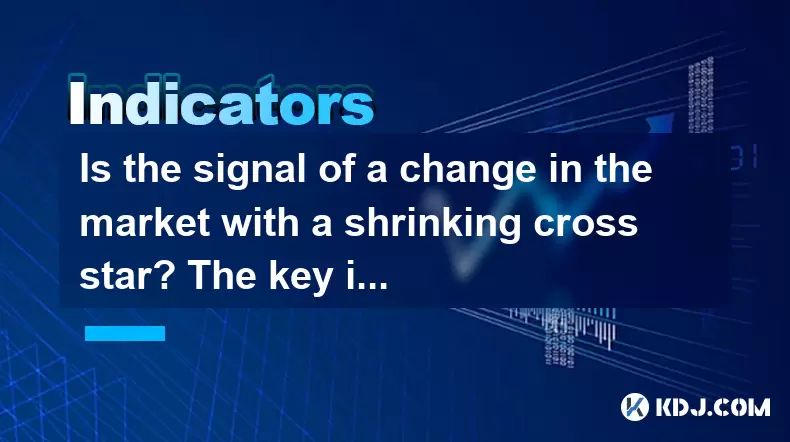
What Is a Shrinking Cross Star in Cryptocurrency Charts?
In technical analysis, the shrinking cross star is a candlestick pattern that appears when there is indecision in the market. It typically forms after a trend and may signal a potential reversal or continuation depending on its position on the chart. The shrinking cross star is characterized by a small body with long upper and lower shadows, indicating that neither buyers nor sellers could gain control during that trading period.
The shrinking nature of this pattern means that volume and price movement are decreasing, which can be interpreted as a loss of momentum. This pattern is especially significant in cryptocurrency markets due to their high volatility and speculative nature.
How to Identify a Shrinking Cross Star Pattern
- Look for a small-bodied candle: The candle should have minimal difference between its open and close prices.
- Long upper and lower shadows: These indicate that both bulls and bears tried to take control but failed.
- Reduced volume compared to previous candles: This confirms the shrinking aspect of the pattern.
- Position relative to the trend: Whether it appears at a resistance level, support zone, or mid-trend will influence its interpretation.
This pattern is often confused with a doji or spinning top, but what sets the shrinking cross star apart is the context in which it appears and the gradual reduction in volatility preceding it.
Why Position Matters When Analyzing the Shrinking Cross Star
The position of the shrinking cross star on the chart determines whether it signals a reversal or consolidation. If it appears near a key resistance level after an uptrend, it could suggest that buyers are losing steam and a pullback might follow. Conversely, if it appears near a strong support area after a downtrend, it might indicate that selling pressure is waning and a bounce could occur.
Traders must pay attention to the surrounding candlesticks and major support/resistance zones. For example:
- A shrinking cross star forming after a series of bullish candles at a Fibonacci retracement level could hint at a potential bearish reversal.
- If it appears within a consolidation phase, it might mean the market is pausing before continuing in the original direction.
Using tools like moving averages, Bollinger Bands, or volume indicators can help confirm the implications of this pattern.
How to Trade Using the Shrinking Cross Star Signal
To effectively trade based on the shrinking cross star, traders should follow these steps:
- Confirm the pattern: Ensure that the candle meets the criteria of a shrinking cross star — small body, long shadows, and low volume.
- Check nearby levels: Look at recent support and resistance areas, trendlines, or Fibonacci levels where this pattern occurs.
- Wait for confirmation: The next candle after the shrinking cross star should ideally break out in one direction. This breakout can serve as a trigger for entry.
- Set stop-loss orders: Place stops just beyond the high or low of the cross star candle to manage risk.
- Determine profit targets: Use measured moves or prior swing points to set realistic take-profit levels.
For instance, if a shrinking cross star appears at the 0.618 Fibonacci retracement level and the next candle closes below the low of the cross star, a trader might consider entering a short position with a stop above the high.
Common Misinterpretations and How to Avoid Them
One common mistake among novice traders is treating every cross star as a reversal signal. However, not all shrinking cross stars lead to reversals. Some simply represent consolidation before the trend continues.
To avoid false signals:
- Avoid isolated patterns: Always analyze the shrinking cross star in the context of the broader chart structure.
- Use multiple timeframes: Check higher timeframes (like 4-hour or daily charts) to see if the pattern aligns with larger trend dynamics.
- Combine with other indicators: Tools such as RSI, MACD, or Ichimoku Cloud can provide additional validation.
- Observe volume changes: A sudden increase in volume after the cross star may indicate renewed interest in one direction.
By avoiding premature conclusions and waiting for confluence from other indicators, traders can significantly improve the reliability of this pattern.
Shrinking Cross Star vs Other Reversal Patterns
While many candlestick patterns signal potential reversals, the shrinking cross star stands out due to its neutrality. Unlike bearish engulfing or hammer patterns that clearly favor one side, the shrinking cross star shows balance.
Here’s how it compares:
- Hammer/Inverted Hammer: These have directional bias; the hammer suggests bullish reversal while the inverted hammer hints at bearish reversal.
- Engulfing Patterns: These show clear dominance by either buyers or sellers in the next candle.
- Doji: Similar to the cross star, but dojis come in various forms (dragonfly, gravestone, etc.) and may appear in different contexts.
The shrinking cross star is unique because it often precedes a decision point in the market. Its appearance in combination with other tools can enhance accuracy.
Frequently Asked Questions
Q: Can a shrinking cross star appear in sideways markets?
Yes, the shrinking cross star is commonly seen in sideways or consolidating markets. In such cases, it usually reflects indecision rather than a reversal. Traders should look for a breakout from the consolidation range to determine the next move.
Q: How reliable is the shrinking cross star in crypto compared to traditional markets?
Cryptocurrency markets are more volatile and influenced by sentiment, so the shrinking cross star can be less reliable without confirmation. However, when combined with volume and support/resistance levels, it remains a valuable tool.
Q: Should I use the shrinking cross star alone to make trading decisions?
No single indicator or candlestick pattern should be used in isolation. The shrinking cross star works best when confirmed by other technical tools like moving averages, Fibonacci levels, or volume analysis.
Q: What timeframes work best for identifying a shrinking cross star?
The shrinking cross star can appear on any timeframe, but it's most effective on 1-hour, 4-hour, and daily charts. Lower timeframes tend to produce more noise and false signals.
Disclaimer:info@kdj.com
The information provided is not trading advice. kdj.com does not assume any responsibility for any investments made based on the information provided in this article. Cryptocurrencies are highly volatile and it is highly recommended that you invest with caution after thorough research!
If you believe that the content used on this website infringes your copyright, please contact us immediately (info@kdj.com) and we will delete it promptly.
- The non-fungible token market has experienced another slump in April 2025
- 2025-06-15 10:25:12
- CZ Explains Hong Kong's Pro-Crypto Stance, Acting as a Sandbox for China
- 2025-06-15 10:25:12
- XRP Futures Ratio Hits 1-month Low as Shorts Outnumber Longs By a Considerable Margin
- 2025-06-15 10:20:11
- The U.S. Securities and Exchange Commission (SEC) has delayed its decision on several spot crypto ETFs
- 2025-06-15 10:20:11
- Gros Islet, Saint Lucia, Saint Lucia – Structural changes in the global trading landscape
- 2025-06-15 10:15:11
- Trump Media & Technology Group (TMTG) Is Developing a Utility Token to Power Truth+ Subscriptions
- 2025-06-15 10:15:11
Related knowledge
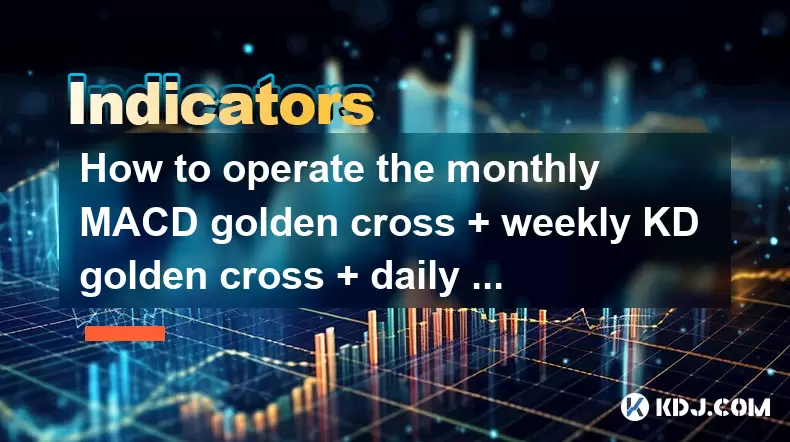
How to operate the monthly MACD golden cross + weekly KD golden cross + daily volume breakthrough?
Jun 15,2025 at 05:36am
Understanding the Strategy: Monthly MACD Golden CrossTo effectively operate the monthly MACD golden cross, traders must first understand what this signal entails. The MACD (Moving Average Convergence Divergence) golden cross occurs when the MACD line crosses above the signal line on a given chart timeframe. When this happens on the monthly chart, it sug...
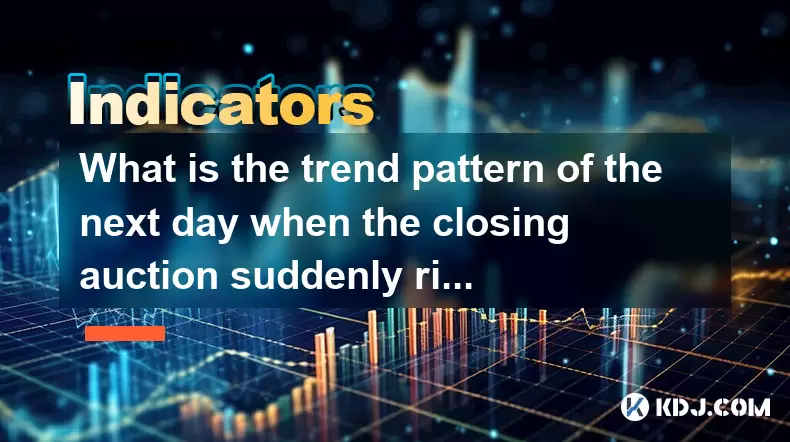
What is the trend pattern of the next day when the closing auction suddenly rises?
Jun 15,2025 at 08:15am
Understanding Closing Auctions in Cryptocurrency MarketsIn the context of cryptocurrency trading, a closing auction refers to a mechanism used by exchanges to determine the closing price of an asset at the end of a trading session. This process typically occurs within a short time window before the market closes for the day and aims to provide a fair an...

What does it mean when the volume fluctuates during the sideways trading at high levels?
Jun 15,2025 at 10:28am
Understanding Volume Fluctuations in Sideways TradingWhen volume fluctuates during sideways trading at high levels, it refers to the changes in the number of assets traded over a given period while the price remains relatively stable, moving within a defined range. This phenomenon typically occurs when the market lacks a clear directional bias—neither b...
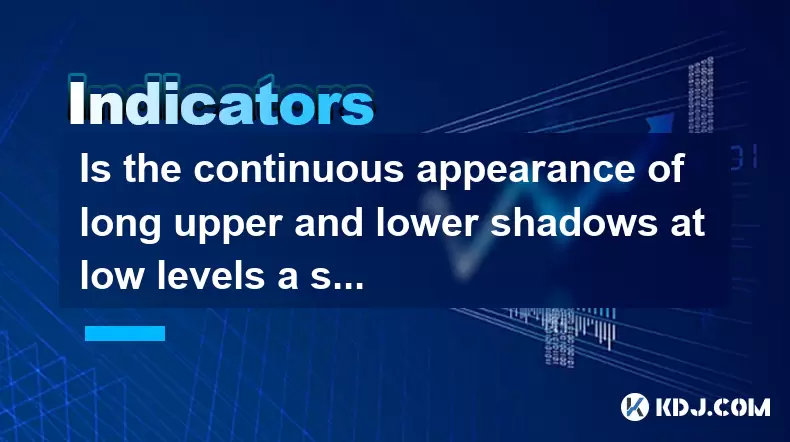
Is the continuous appearance of long upper and lower shadows at low levels a signal of accumulation?
Jun 15,2025 at 01:43am
Understanding Long Upper and Lower Shadows in Candlestick ChartsIn the world of cryptocurrency trading, candlestick patterns are widely used to analyze price movements. A long upper shadow, also known as a wick or tail, indicates that the price rose significantly during the period but was pushed back down by selling pressure. Conversely, a long lower sh...
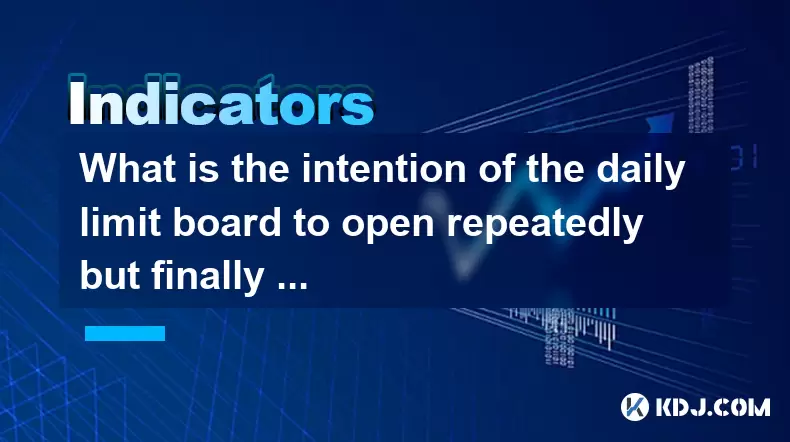
What is the intention of the daily limit board to open repeatedly but finally close?
Jun 15,2025 at 01:08am
Understanding the Daily Limit Board in Cryptocurrency TradingIn cryptocurrency trading, a daily limit board refers to a price movement restriction mechanism applied by certain exchanges or regulatory bodies. This mechanism is primarily used to prevent extreme volatility and panic selling or buying during periods of intense market fluctuation. When an as...

How to calculate the probability of trend continuation after the MACD column divergence?
Jun 14,2025 at 08:01am
Understanding MACD Column DivergenceThe Moving Average Convergence Divergence (MACD) is a widely used technical indicator in cryptocurrency trading. The MACD column, also known as the histogram, represents the difference between the MACD line and the signal line. When price makes a new high or low but the MACD histogram does not confirm this movement, a...

How to operate the monthly MACD golden cross + weekly KD golden cross + daily volume breakthrough?
Jun 15,2025 at 05:36am
Understanding the Strategy: Monthly MACD Golden CrossTo effectively operate the monthly MACD golden cross, traders must first understand what this signal entails. The MACD (Moving Average Convergence Divergence) golden cross occurs when the MACD line crosses above the signal line on a given chart timeframe. When this happens on the monthly chart, it sug...

What is the trend pattern of the next day when the closing auction suddenly rises?
Jun 15,2025 at 08:15am
Understanding Closing Auctions in Cryptocurrency MarketsIn the context of cryptocurrency trading, a closing auction refers to a mechanism used by exchanges to determine the closing price of an asset at the end of a trading session. This process typically occurs within a short time window before the market closes for the day and aims to provide a fair an...

What does it mean when the volume fluctuates during the sideways trading at high levels?
Jun 15,2025 at 10:28am
Understanding Volume Fluctuations in Sideways TradingWhen volume fluctuates during sideways trading at high levels, it refers to the changes in the number of assets traded over a given period while the price remains relatively stable, moving within a defined range. This phenomenon typically occurs when the market lacks a clear directional bias—neither b...

Is the continuous appearance of long upper and lower shadows at low levels a signal of accumulation?
Jun 15,2025 at 01:43am
Understanding Long Upper and Lower Shadows in Candlestick ChartsIn the world of cryptocurrency trading, candlestick patterns are widely used to analyze price movements. A long upper shadow, also known as a wick or tail, indicates that the price rose significantly during the period but was pushed back down by selling pressure. Conversely, a long lower sh...

What is the intention of the daily limit board to open repeatedly but finally close?
Jun 15,2025 at 01:08am
Understanding the Daily Limit Board in Cryptocurrency TradingIn cryptocurrency trading, a daily limit board refers to a price movement restriction mechanism applied by certain exchanges or regulatory bodies. This mechanism is primarily used to prevent extreme volatility and panic selling or buying during periods of intense market fluctuation. When an as...

How to calculate the probability of trend continuation after the MACD column divergence?
Jun 14,2025 at 08:01am
Understanding MACD Column DivergenceThe Moving Average Convergence Divergence (MACD) is a widely used technical indicator in cryptocurrency trading. The MACD column, also known as the histogram, represents the difference between the MACD line and the signal line. When price makes a new high or low but the MACD histogram does not confirm this movement, a...
See all articles

























































































